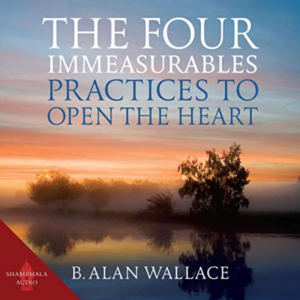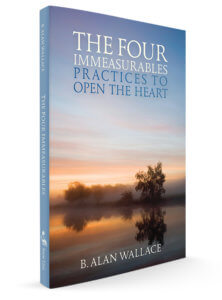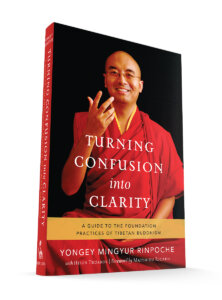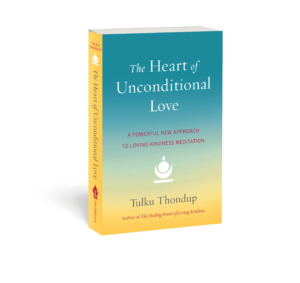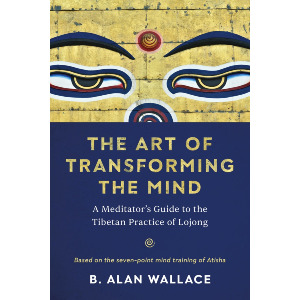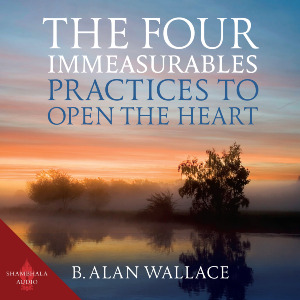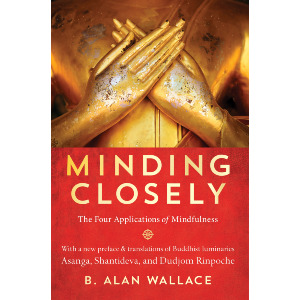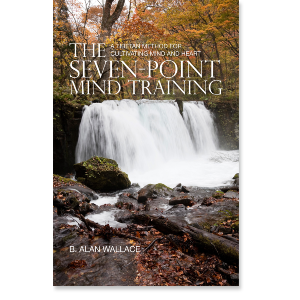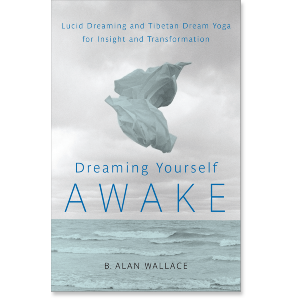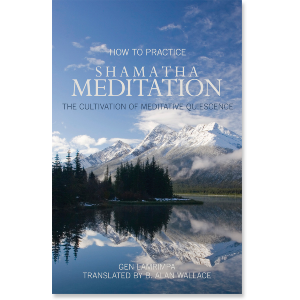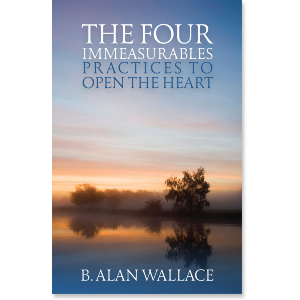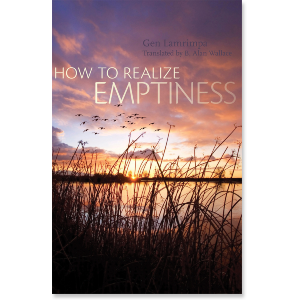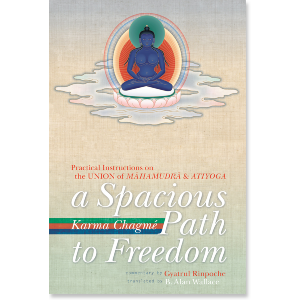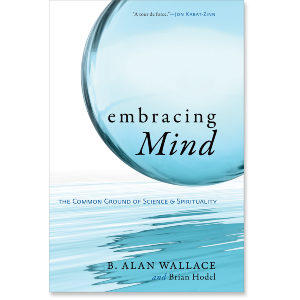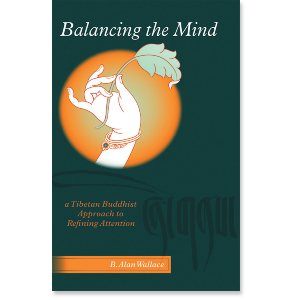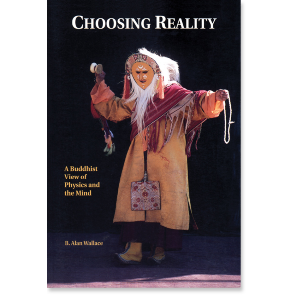Dealing with Problems in Shamata Practice
If your practice is wholesome and enjoyable, maintained with a sense of buoyancy and well-being, the chances are extremely remote that any problems that are catalyzed in meditation will become entrenched. Almost every case I have encountered of persistent problems in samatha practice is characterized by a lack of buoyancy and a reliance on sheer discipline. Typically, when samatha practice goes wrong, it gets heavy—frustrating and isolated, barren and dark. You may feel you have to muscle your way through, and of course that makes it worse.
Physical tension, aches and pains, are not necessarily indications of a problem. In the early stages especially, tension in the body may be brought on more by the mind than by muscle fatigue, or some other purely physical factor. People’s knees may hurt when they are meditating and feel fine at any other time, even if they are sitting motionlessly for long periods of time. Part of the mind wants an excuse. If the pain is caused by this sort of influence from the mind, then make a choice. Recognize that the tension is not really debilitating, and just let it go.
If the problem tends to linger between sessions, and especially if it’s conjoined with an array of other symptoms that suggest an imbalance in your nervous system, you should be more careful. Such symptoms include tension, a feeling of darkness or heaviness at the heart that lingers, a gloom in the mind that may slip into depression or irritability, nervousness, and a tendency to weep—not a refreshing, cleansing weeping, but just grief. If you recognize one or more of those occurring in a chronic fashion, then something has gone wrong. It’s time to lighten up, speak with the teacher, and clear it out. If you are on your own, the first thing to do is lighten up the intensity of the practice. Ease off and let yourself be a little bit lazy. You might try some yoga: that’s what it’s for. Above all, bring in a greater sense of buoyancy and find something to restore good cheer and lightness to the mind. If you can do that, in all likelihood, you will knock out the problem. When the mind’s joy, its buoyancy and lightness, becomes a distant memory, that’s when these symptoms can really set in persistently and become problematic.
If you ever experience a dense, dark, tight, fisty quality, especially in the area of your heart or the center of your chest, back off immediately. Back off just as if you found a snake in your lap. It’s really important not to pursue the meditation if this happens, as great damage can be done. Do something cheerful instead. Go eat pizza and ice cream; listen to your favorite music. Do whatever you can to bring lightness back in and get out of that space quickly.
Why would this happen? The heart center is closely connected to mental consciousness. There is a vital energy in the body that you can experience in a tactile way, even though it is not physical in the Western scientific sense. (There is no place for “vital energy” in modern physics. I don’t think there ever will be; it’s a different type of phenomenon. This is a type of “qualia” that is experienced first-hand, not something existing purely objectively, independently of experience.) But it manifests, among other ways, as the physical sensations at your heart that accompany different emotional states. When you feel buoyant and happy, when you feel excited, when you feel heavy and depressed, when you feel like dirt: check the physical sensations at your heart. For any of the major mind states, you can probably feel the corresponding vital energy if you attend to it.
In samatha practice, you are doing something very unusual with and to your mind. You’re asking it to focus on one thing and stay there. That means you are, in a sense, compacting your attention. You’re channeling and collecting it, gathering it together. As you gather your mind, you also gather your vital energies, drawing them to the heart. If the quality of awareness that you are compacting has negative elements such as resentment, guilt, depression, sadness, or fear, that will also show up in the heart as a sensation of heavy darkness, a feeling like you have just swallowed a rock.
The Tibetans describe this as “bad energy” (rlung ngan pa), and of course that is just what it feels like. It is dangerous, because the energy can get lodged in the heart and stay there. That may lead to chronic depression, or worse. It’s unfortunate, and it happens unnecessarily to too many meditators. You can work through it but it’s difficult, and it’s far better not to fall into it in the first place. If it does start, the sooner you deal with it, the easier it will be. How do you address it? You need to bring a lot of buoyancy and light into your life and you probably shouldn’t meditate much. If you do meditate, the sessions should be very short and very light; lovingkindness practice is appropriate, but never to the point where it gets oppressive or heavy in any sense. You need to keep a lightness in your life, do things that you enjoy, spend time with people you enjoy. If you have a spiritual teacher, think about him or her a lot. Do whatever you can to introduce a quality of lightness, sweetness, and warmth into your heart and mind. You really have to take major steps to counter the dark, cold, heaviness of this problem, and be very patient about returning to any kind of intensive meditation. You have to take a leave of absence for a while.
It is unusual, but similar problems to those associated with the heart center can sometimes happen when breath awareness with a focus on the nostrils concentrates too much energy in the head. You may find your head feeling full and bloated like a pumpkin on top of your neck. Or you may experience a feeling of pressure in the head, or headaches. If this happens, drop that technique for a while. Bring the awareness down to the abdomen or diffuse it gently throughout the whole body, but get it out of the head. It’s not healthy; if you continued slogging on with that technique, it could become a chronic problem and there is really no reason to let that happen. Headaches should not become common as a result of practice. If they occur once in a while, that’s normal. But if you find you’re getting headaches from meditation with any degree of regularity at all, then something is wrong and needs to be checked. If headaches become at all consistent, please speak with a qualified teacher.
On the other hand, you may experience many unusual physical sensations in samatha practice that are not at all cause for concern. People commonly report bizarre experiences such as distortions of the sense of physical space, illusions of movement or falling, a sense that the limbs are contorted, or a ringing in the ears. You may feel as if your body is swelling up like the Pillsbury doughboy, or it may feel rooted to the earth. In general, when such experiences involve the whole body, or are peripheral, focused on the limbs, they are not danger signs at all, but quite harmless. The traditional instructions are to ignore such phenomena, hard as that may be. By paying attention to a sensation or becoming fixated on it, you perpetuate it and it can then turn into an obstacle.
The reason behind such experiences is that samatha has a profound effect on the vital energy system in the body. We are doing something the mind is not at all accustomed to, plunking the mind down and saying: Stay! As you concentrate and channel the mind in an unfamiliar way, especially if you go to greater depths than you have previously, this is bound to have an effect on the vital energies. They start to rearrange themselves. This continues all through the course of developing samatha, all the way to its culmination. When you actually attain samatha, there is a radical shift of vital energies. It’s like having your whole house rewired: the energies will function differently, and your body will feel extraordinarily light and pliant. From then on, unless you let your samatha deteriorate, that becomes your normal physical state. Prior to the actual achievement of samatha there’s a lot of rearranging of the furniture, so to speak, as the energies shift around. And as this takes place, you may feel strange physical sensations, perhaps even as if your body is rotating or turning upside down.
What if you are not sure if something you are experiencing might be problematic? There are two types of teachers: one is your own intuition, the other is an outside source. If you have a very strong sense something is worth exploring, do so. Release yourself into it and experiment. If you have problems, come back and check with an outside source. If you have a recurring problem with headaches or a heaviness of the heart, I suggest you consult a qualified meditation teacher. If you ever start developing a chronic sense of fatigue and tension in the meditation, or a chronic sense of darkness around the mind, that’s a time to stop and take appropriate countermeasures. Come and talk to a teacher. Get it early and nip it in the bud. Don’t let it linger and become an embedded problem.
Other Books Related to the Four Immeasurables

B. Alan Wallace has authored, translated, edited, and contributed to more than forty books on Tibetan Buddhism, science, and culture. With fourteen years as a Buddhist monk, he earned a BA in physics and the philosophy of science and then a PhD in religious studies. After teaching in the Department of Religious Studies at the University of California, Santa Barbara, he founded the Santa Barbara Institute for Consciousness Studies to explore the integration of scientific approaches and contemplative methods.


